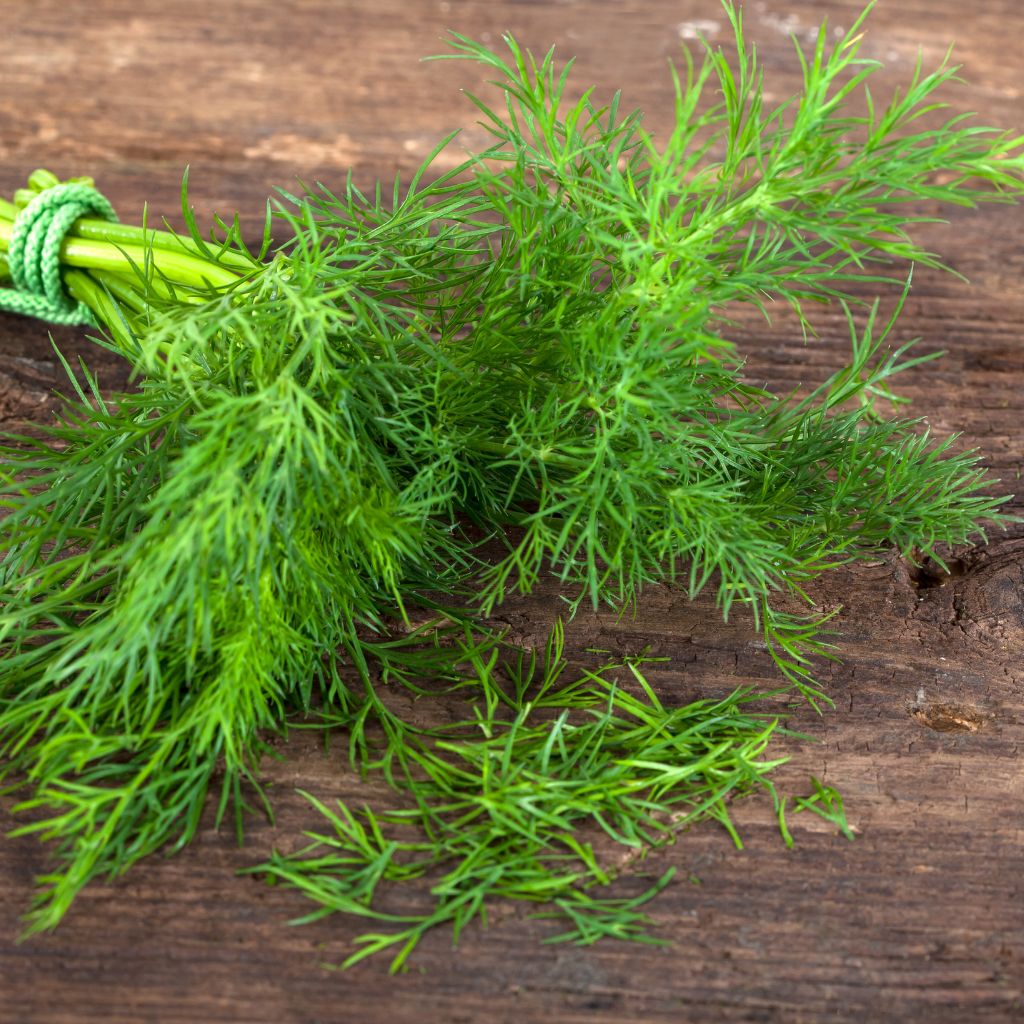
Dill, or Anethum graveolens, is a versatile herb that often finds its home in the culinary traditions of Scandinavia. Its feathery leaves and unique flavor profile – a delicate blend of anise, celery, and parsley – have made it a beloved ingredient in numerous dishes. Let's embark on a journey to understand the depth of dill, the herb of Scandinavia.
Dill is a type of herbaceous plant in the family Apiaceae, commonly known for its feathery leaves and aromatic seeds. It is scientifically known as Anethum graveolens. Dill is native to the Mediterranean region and Western Asia but is now cultivated worldwide.
Both the leaves and seeds of dill are used as a culinary herb and spice. The leaves, often referred to as dill weed, have a fresh, grassy flavor with a hint of anise or licorice. They are commonly used to flavor dishes like soups, salads, sauces, and pickles. Dill weed is particularly popular in Scandinavian, Eastern European, and Middle Eastern cuisines.
Dill seeds are small and oval-shaped with a pungent, slightly bitter taste. They are commonly used as a spice and are often found in pickling recipes, bread, and vegetable dishes. Dill seed oil is also extracted and used in the production of certain food products, cosmetics, and perfumes.
In addition to its culinary uses, dill has some medicinal properties. It has been traditionally used as a digestive aid, and its essential oil is known for its antimicrobial and antifungal properties. Dill is also a good source of vitamins A and C, as well as minerals like calcium and iron.
A Glimpse into Dill's Origins
Native to the Mediterranean and Southern Russia, dill found its way to Scandinavia through various trade routes. Its name originates from the Old Norse word, "dylla," meaning "to soothe," reflecting its early use as a remedy for stomach ailments. Dill became a culinary cornerstone in Scandinavian cuisine, where its distinct aroma and flavor earned it a special place in their culinary heart.
Dill in Scandinavian Cuisine
In Scandinavia, dill weaves itself into a tapestry of dishes, enhancing everything from hearty soups and stews to delicate fish courses. Its vibrant green color and distinctive flavor make it a staple in traditional dishes, setting the region's cuisine apart.
One of the most famous dishes is "Gravlax," a Nordic dish where salmon is cured with salt, sugar, and generous amounts of dill. The herb's unique flavor cuts through the richness of the salmon, creating a balance that is irresistibly delectable.
Dill is also an essential component of "dillkött," a traditional Swedish stew made from lamb or veal, vinegar, vegetables, and bunches of dill. Furthermore, it is often paired with new potatoes in a classic summer dish, boiled and tossed with butter and fresh dill.
Dill Beyond Scandinavia
While dill holds a prominent place in Scandinavian cooking, its influence extends far beyond. It is also used in Greek, Turkish, and Russian cuisines, to name a few. Dill seeds are a common spice in bread-making in many cultures, while dill vinegar is used in pickling in North America.
In many Middle Eastern countries, dill is used in rice dishes and mixed with yogurt as a cooling side dish. Meanwhile, in Vietnam, dill is often used in seafood dishes and soups, adding an extra layer of flavor complexity.
Growing and Storing Dill
Growing dill at home can be a rewarding endeavor. This sun-loving herb thrives in well-drained soil and can be easily grown from seeds. Once the plant is established, you can regularly harvest the feathery leaves for your dishes.
When it comes to storing dill, it's best used fresh, as it loses its flavor quickly when dried. To store fresh dill, wrap the dill in a damp paper towel, place it in a plastic bag, and store it in the refrigerator. It should stay fresh for about a week.
For longer preservation, you can freeze dill. Chop the fresh dill, place it in an ice cube tray, cover with water or olive oil, and freeze. You can then pop a cube into your cooking for a hit of fresh dill flavor.
Health Benefits of Dill
Beyond the kitchen, dill also boasts several health benefits. Rich in vitamin C, vitamin A, and various minerals, it's a potent antioxidant. Dill also has antibacterial properties and has been used traditionally as a digestive aid, reinforcing its Old Norse meaning to "soothe."
Conclusion
Dill, with its feathery green leaves and unique flavor profile, is more than just the herb of Scandinavia. It's a testament to the power of herbs in transforming dishes, crossing cultural boundaries, and providing health benefits. So, the next time you're in the kitchen, why not reach for dill? Whether you're preparing a traditional Scandinavian dish or simply tossing it through a salad, dill can elevate your culinary creations to new aromatic heights. Remember, dill isn't just for pickles – it's a fragrant journey waiting to happen.
Alert: While spices can have many beneficial properties for health, using them for medical purposes should be done under the guidance and supervision of a healthcare professional or specialist. Some spices may interact with medications or cause adverse reactions in certain individuals, and it is important to use them safely and appropriately. If you are considering using spices for a medical condition, it is important to consult with a healthcare professional before doing so.

No comments yet